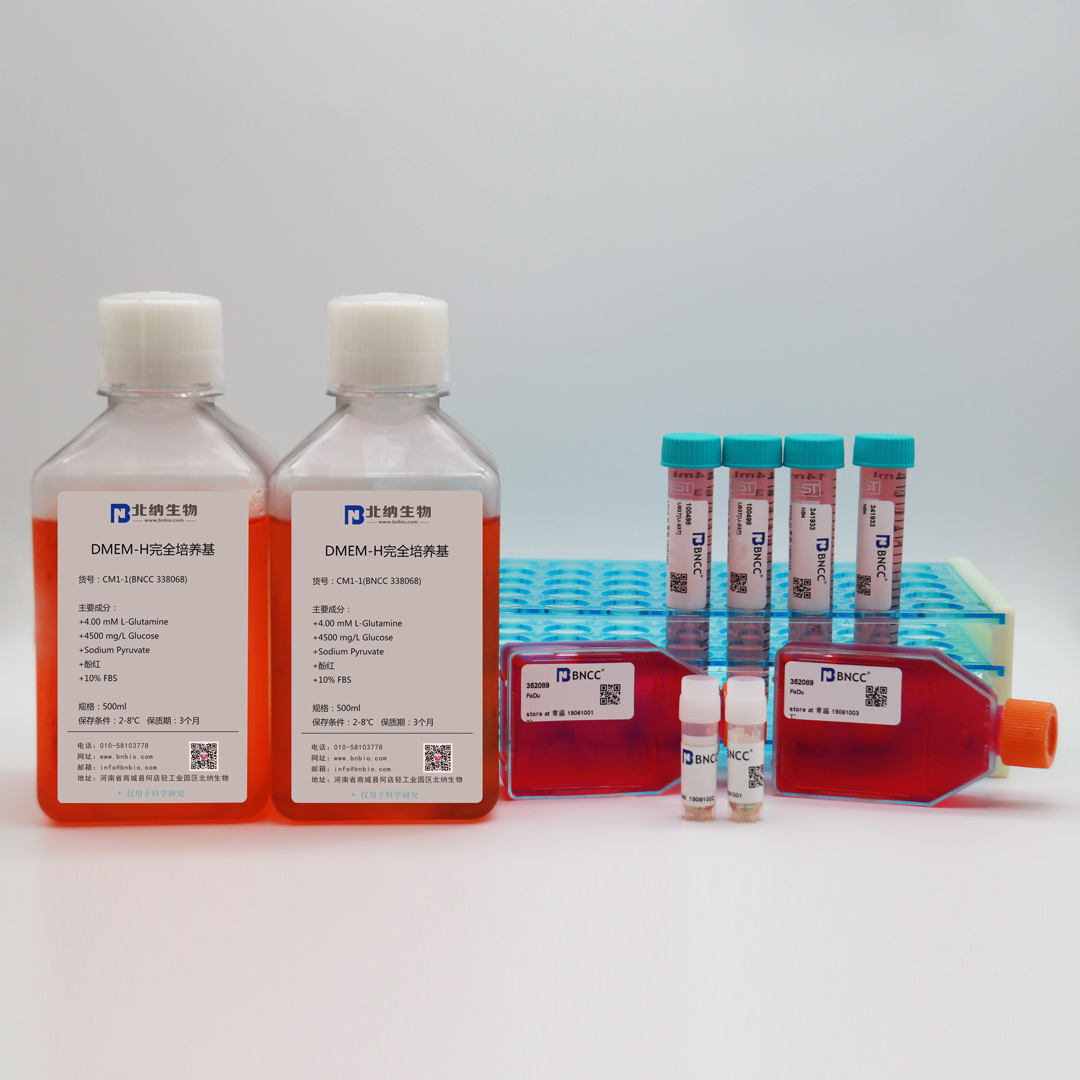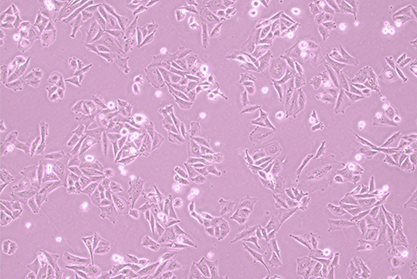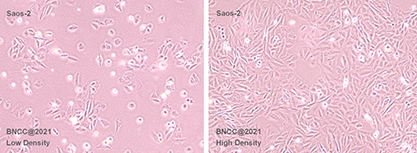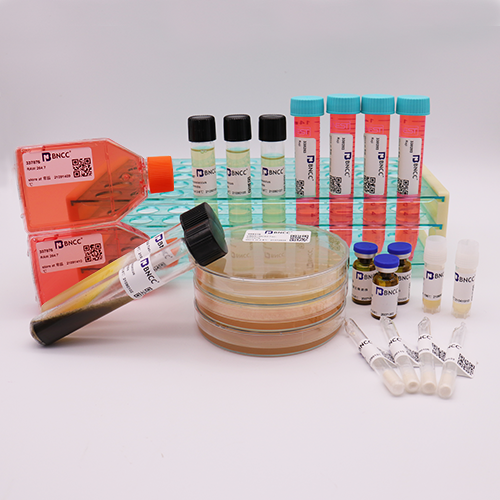1. cell name: Saos-2
2. No. & nbsp;:BNCC 338485
3. growth properties: ■ adherence □ suspension □ semi-suspension and semi-adherence
4. growth conditions:
| culture medium |
85% McCOY ' S 5A(SIGMA, article number M4892, add NaHCO3 2.2g/L) |
| serum |
10% FBS |
| temperature |
37 ℃ |
| atmosphere |
5% CO2,95% AIR |
| frozen storage conditions |
culture medium 50%, serum 40%, DMSO 10% |
5. composition:
| composition |
specifications |
| frozen via |
250 ul/1 |
| handling procedure |
1 copy |
Attentions and handling procedures
1 upon receipt, please recover the cells immediately if dry ice is exhausted, and do not cryopreserve the cells again; If there is still dry ice, please immediately place the frozen vials into liquid nitrogen, and store the cells according to the specified conditions. Do not put the cells at high temperature.
2 Please recover the cells within 4 weeks after receipt, and check the cell viability. The compliant is not accepted if it is overdue reported.
3 It is not necessary to centrifuge the frozen cell, because the cryopreservation reagent proportion is optimized. After thawing, directly transfer 250ul of cell suspension into the culture vessel containing 8-10 ml of complete medium.
Recovery and subculture handling procedures of adherent cells ( under strict aseptic conditions )
1 Remove the medium in the original culture flask, rinse twice with PBS, and add 1~2 ml of 0.25% EDTA trypsin for digestion (usually in 1~2min).
2 Observe the digestion under the microscope. When the cell edge shrinks and adherent is loose, remove the trypsin, add 6~8ml complete medium, aspirate the cell layer off.
3 Transfer part of the cell suspension to a fresh culture vessel / flask, add appropriate complete medium, and culture it in the incubator.
4 Pay attention to the change of pH value of medium and cell density, renew the medium regularly, and repeat the subculture or cryopreservation when the cell density reaches 70%-80%.
Recovery and subculture handling procedures of suspension cells ( under strict aseptic conditions )
1 The suspension cells is normally handled by dividing the cell solution, subculture in separate flasks, that is, transfer half of the cell suspension to a fresh culture vessel, add appropriate complete medium and cultivate in incubator; It can also be divided and subcultured in several flasks according to cell density.
2 Pay attention to the change of pH value of medium and cell density, renew the medium regularly, and repeat the subculture or cryopreservation when the cell density reaches 70%-80%.
Handling procedures of semi-adherent and semi-suspended cells ( under strict aseptic conditions )
1 If there are many suspended cells with good refractive index, they can be collected by centrifugation and continue to be cultured.
2 If there are few suspended cells, it may not be collected. And subculture according to the handling procedures of adherent cells
3 If there are many suspended cells, collect them by centrifugation. The adherent cells in the flask are operated according to the handling instructions of adherent cell for digestion, termination of digestion, aspiration. Suspend them with the previously collected suspension cells and dispense into separate culture vessels.

 info@bncc.com
info@bncc.com
 - English
- English
 - Japanese
- Japanese





